Evolutionary Ecology
The department of Evolutionary Ecology gathers complementary skills in behavioural ecology, population dynamics, population biology, community ecology, and methodology (statistics and modelling). The research done in the department aims at studying how animal species evolve in a changing world by understanding the causes of the evolution of traits, adaptations and interactions. For that, we consider different levels of organization from individuals to populations and communities. Because organisms cannot be considered isolated from other biotic factors, we consider pathogens but also competing species within communities.
We study how individuals adapt to their environments that are largely impacted by anthropic pressures, and how life history traits and behaviour evolve in response to these pressures. Although we mainly focus on phenotype, we more and more consider the mechanistic link between the genotype and the phenotype. We develop the theoretical framework of our discipline through a conceptual and modeling approach. In parallel, we test hypotheses that arise from theoretical predictions through experimental, comparative and observational approaches on different biological models (insects, birds, mammals). Experimental approaches are developed in the laboratory (insect model) and in natura (bird, insect and mammal models). Observational and comparative research is mainly concerned with vertebrates. Our approaches are also, and increasingly, interested in the mechanisms of adaptive responses. In addition to the classical approaches of demographic analysis and trait change, methods of ecophysiology, chemical ecology and molecular biology are used.
Our department hosts several long-term studies of wild populations of different species. These long-term studies offer a valuable way to understand how biotic and abiotic factors affect individuals’ life history traits, and the functioning of populations in natura. Five populations of mammalian species are thus monitored for several years (more than 40 years on roe deer, 30 on Alpine marmots, 25 years on cats, 16 years on zebras, and 20 years on impala). Two of our study sites (La Sassière in Vanoise National Park (Alpine marmots) and Hwange National Park) have been certified as “Site d’Etude en Ecologie Globale” (SEEG), and two (ZA “Hwange” and ZA “Antarctic and sub-Antarctic”) were certified as “Zone Atelier” by the CNRS.
The department of Evolutionary ecology is also largely involved in training activities. Lastly, we also have strong socio-economic relationships. Indeed, because we address questions of major societal interest (global warming, public health) we tightly collaborate with socio-economic partners (Office Français de la Biodiversité, Vanoise National Park, Hwange National Park in Zimbabwe, Office National des Forêts, etc.) and participate to general public and media events.
Publications
Display of 1801 to 1830 publications on 2459 in total
What determines global positioning system fix success when monitoring free-ranging mouflon?
European Journal of Wildlife Research . 55 : 603-613
Journal article
see the publicationAdaptive dynamics of dormancy duration variability: evolutionary trade-off and priority effect lead to suboptimal adaptation.
Evolution - International Journal of Organic Evolution . 63 ( 7 ) : 1879-92
Journal article
see the publicationUsing Dynamic Stochastic Modelling to Estimate Population Risk Factors in Infectious Disease: The Example of FIV in 15 Cat Populations
PLoS ONE . 4(10) : 1-13
Journal article
see the publicationEmergence of infectious diseases: when hidden pathogens break out
Comptes Rendus. Biologies . 332(6) : 539-547
Journal article
see the publicationHeterochronic shifts explain variations in a sequentially developing repeated pattern: Palatal ridges of muroid rodents
16. Annual Conference of the International Society of-Development-Biologists . 126
Conference paper
see the publicationRodent Biodiversity in Changing Environments
Kasetsart . 43 : 83-93
Journal article
see the publicationDevelopmental constraints revealed by co-variation within and among molar rows in two murine rodents.
Evolution and Development . 11 ( 5 ) : 590-602
Journal article
see the publicationThe effects of experimentally manipulated yolk androgens on growth and immune function of male and female nestling collared flycatchers TextitFicedula albicollis
Journal of Avian Biology . 40(2) : 225-230
Journal article
see the publicationFinding essential scales of spatial variation in ecological data: a multivariate approach
Ecography . 32(1) : 161-168
Journal article
see the publicationThe concept of animals trajectories from a data analysis perspective
Ecological Informatics . 4 ( 1 ) : 34-41
Journal article
see the publicationResponding to spatial and temporal variations in predation risk: space use of a game species in a changing landsape of fear
Canadian Journal of Zoology . 87 : 1129-1137
DOI: 10.1139/Z09-101
Journal article
see the publicationAge-specific effect of heterozygosity on survival in alpine marmots, Marmota marmota.
Molecular Ecology . 18 ( 7 ) : 1491-503
Journal article
see the publicationAge-specific effect of heterozygosity on survival in alpine marmots Marmota marmota
Molecular Ecology . 18 : 1491-1503
Journal article
see the publicationFactors affecting beech Fagus sylvatica bark stripping by red deer Cervus elaphus in a mixed forest
Wildlife Biology . 15 ( 2 ) : 187-196
DOI: 10.2981/07-100
Journal article
see the publicationAge-dependent relationship between horn growth and survival in wild sheep.
Journal of Animal Ecology . 78 ( 1 ) : 161-71
Journal article
see the publicationAre abundance indices derived from spotlight counts reliable to monitor red deer population?
Wildlife Biology . -- : 1249-1261
Journal article
see the publicationEmpirical evidences of density-dependence in populations of large herbivores
Advances in Ecological Research . 41 : 313-357
Journal article
see the publicationDynamics of an introduced population of mouflon Ovis aries on the sub-Antarctic 2 archipelago of Kerguelen
Ecography . -- : 1-29
Journal article
see the publicationFlock management and histomonosis in free-range turkeys in France: description and search for potential risk factors
Epidemiology and Infection . 138 ( 3 ) : 353–363
Journal article
see the publicationToxoplasma seroprevalence in a rural population in France: detection of a household effect
BMC Infectious Diseases . 9(76) : 36-40
Journal article
see the publicationLandscape, herd management and within-herd seroprevalence of Toxoplasma gondii in beef cattle herds from Champagne-Ardenne, France
Veterinary Parasitology . 161 : 36-40
Journal article
see the publicationLandscape herd management and within-herd seroprevalence of TextitToxoplasma gondii in beef cattle herds from Champagne-Ardenne France
Veterinary Parasitology . 161 : 36-40
Journal article
see the publicationEcomic - RMQs : Cartographie de la diversité microbienne des sols à l'échelle de la France
4ème Colloque de l'Association Francophone d'Ecologie Microbienne (AFEM) . : 1 p.
Conference paper
see the publicationEcomic - RMQs : Cartographie de la diversité microbienne des sols à l'échelle de la France
4ème Colloque de l'Association Francophone d'Ecologie Microbienne (AFEM) . : 1 p.
Conference paper
see the publicationDiversité des communautés microbiennes telluriques à l'échelle du territoire national
Journées d'Etude des Sols . : 151-152
Conference paper
see the publicationRhizosphere microbiota interfers with plant-plant interactions
Plant and Soil . ( 321 ) : 259-278
Journal article
see the publicationMultivariate analysis of the spatial patterns of 8 trace elements using the French soil monitoring network data
Science of the Total Environment . 407 : 5644-5652
Journal article
see the publicationResponses of Pinus halepensis growth soil microbial catabolic functions and phosphate-solubilizing bacteria after rock phosphate amendment and ectomycorrhizal inoculation
Plant and Soil . 320 (1-2) : 169-179
Journal article
see the publicationAge-specific variation in male breeding success of a territorial ungulate species, the european roe deer
Journal of Mammalogy . 90 ( 3 ) : 661-665
Journal article
see the publicationEstimation of lifetime reproductive success when reproductive status cannot always be assessed
Modeling Demographic Processes in Marked Populations . 3 : 867-879
Book chapter
see the publication
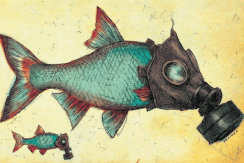
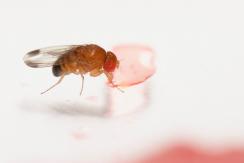
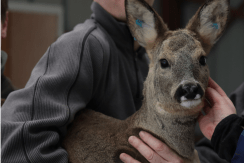
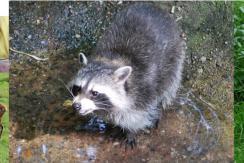
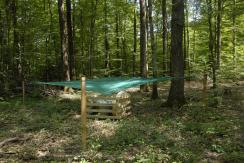
You also, comment on this article